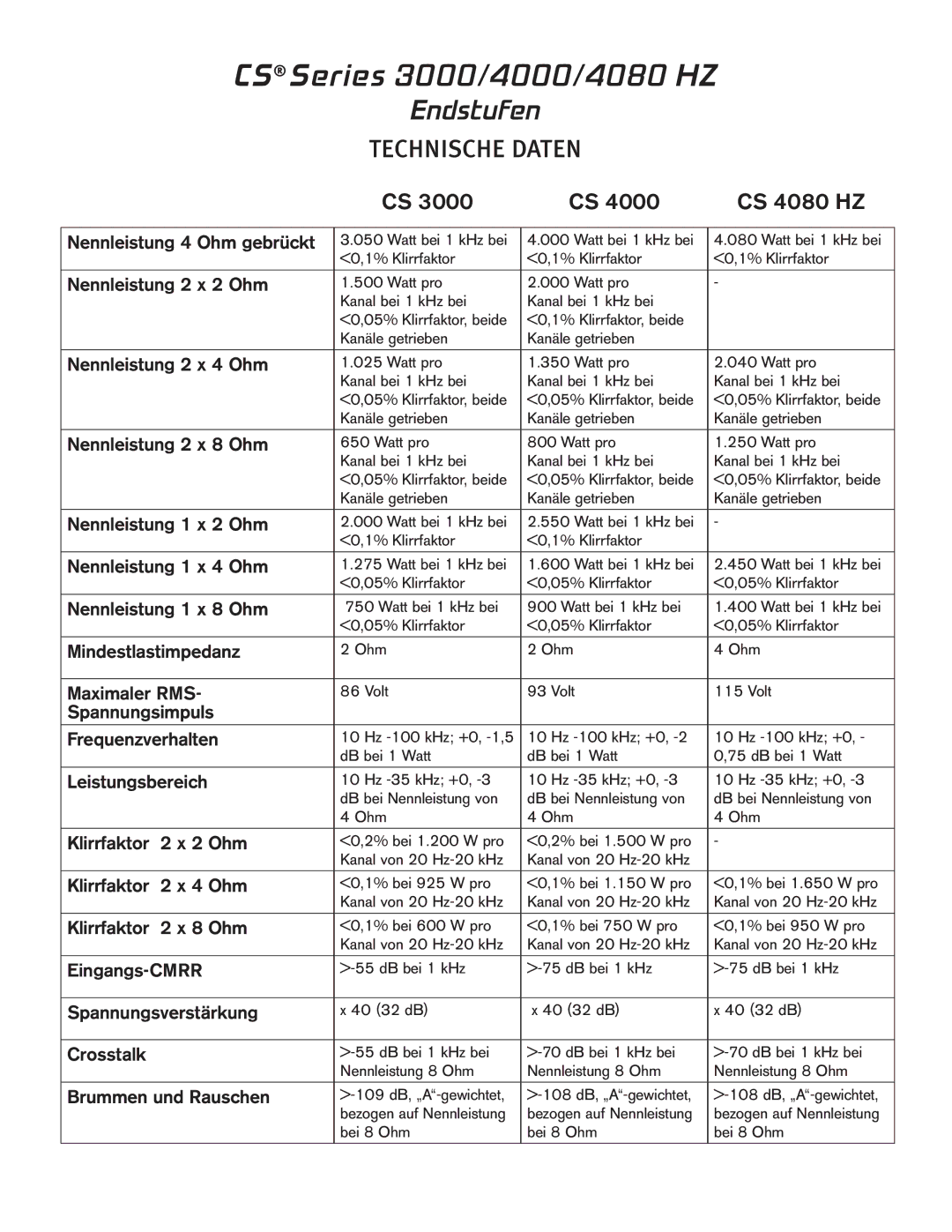4080, 3000, 4000 specifications
The Peavey 4000 is a high-performance audio mixing console that has gained popularity among professional audio engineers and musicians alike. Renowned for its robust construction and versatile features, the Peavey 4000 stands out in live sound settings, recording studios, and mobile applications.One of the main features of the Peavey 4000 is its extensive input capability, with up to 32 channels available. Each channel is equipped with a microphone preamp that delivers clear and precise audio while allowing for a wide frequency response. This ensures that both vocals and instruments can be captured with fidelity, providing an optimal foundation for any audio mix. Additionally, the console includes both XLR and line input options, making it compatible with various audio sources.
The Peavey 4000 also boasts a comprehensive EQ section. Each channel features a three-band EQ, complete with sweepable mid-range frequency control, which empowers users to fine-tune their sound with precision. This flexibility is crucial for tailoring the audio to suit different environments and applications, whether it be a live performance or studio recording.
Built-in effects processing is another standout feature of the Peavey 4000. The console includes a digital effects processor that offers a variety of effects types, such as reverb, delay, and chorus. This allows users to add depth and character to their sound without requiring additional outboard gear. The intuitive interface makes it easy to navigate and apply effects, enhancing workflow during live performances or recording sessions.
Durability is paramount in an audio mixing console, and the Peavey 4000 is constructed with rugged materials designed to withstand the rigors of frequent transportation and use. The solid chassis ensures stability even in challenging environments, while the high-quality faders and knobs are built to endure extensive manipulation.
The Peavey 4000 also provides comprehensive routing capabilities, featuring multiple auxiliary sends, subgroups, and direct outs. This flexibility allows users to create complex mixes while seamlessly integrating external gear, such as monitors and recording devices. In addition, the console features a clear and organized layout, making it accessible for both seasoned professionals and less experienced users.
In summary, the Peavey 4000 is a powerful mixing console that combines versatility, durability, and advanced features. With its exceptional sound quality, extensive EQ options, built-in effects, and rugged construction, it is well-suited for a wide range of audio applications, making it a trusted choice for audio engineers and performers.
